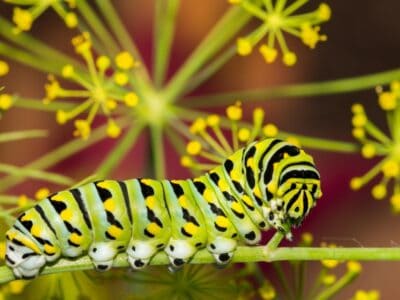Below you can find a complete list of Papua New Guinean animals. We currently track 194 animals in Papua New Guinea and are adding more every day!
Papua New Guinea is a small island nation in Oceania. With about 850 spoken languages, it is one of the most ethnically diverse countries in the world. PNG shares a land border with Indonesia, which owns the western half of the island. Much of the country is dominated by dense tropical rainforests and wetlands, while a large mountain range known as the New Guinea Highlands runs along the entire length of the interior. Along with the rest of the Asian Pacific region, New Guinea is a place of immense biodiversity. A greater concentration of unique species can be found here than almost anywhere else.
The Official National (State) Animals Of Papua New Guinea
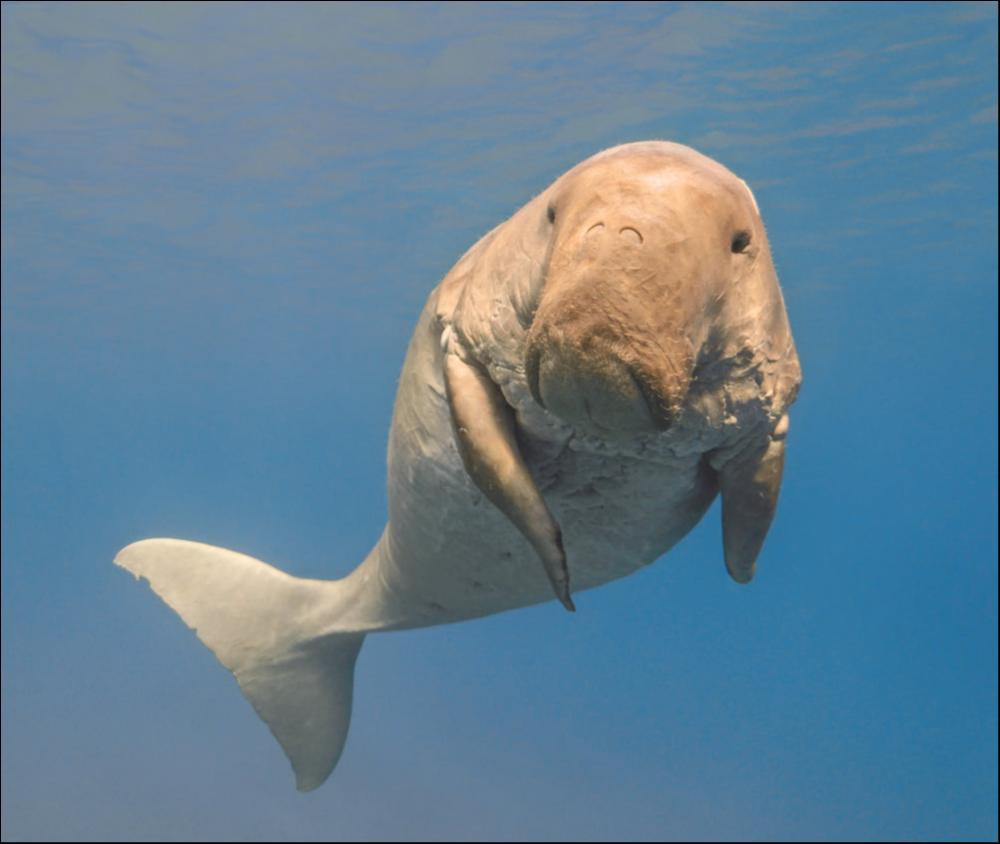
The dugong is one of three species of sea cows.
©vkilikov/Shutterstock.com
Papua New Guinea has a few important national symbols, including the dugong and Count Raggi’s bird of paradise.
The dugong is a marine mammal that includes three species of manatees. While they are similar in appearance, the one thing that separates them is their tales – the dugong has a fluked tale and the manatee has a paddle-shaped tale. They were often considered to be the inspiration for the mermaid.
In 1976, the government made them protected animals, although they are still permitted to be hunted to a certain degree as they are thought to have healing properties.
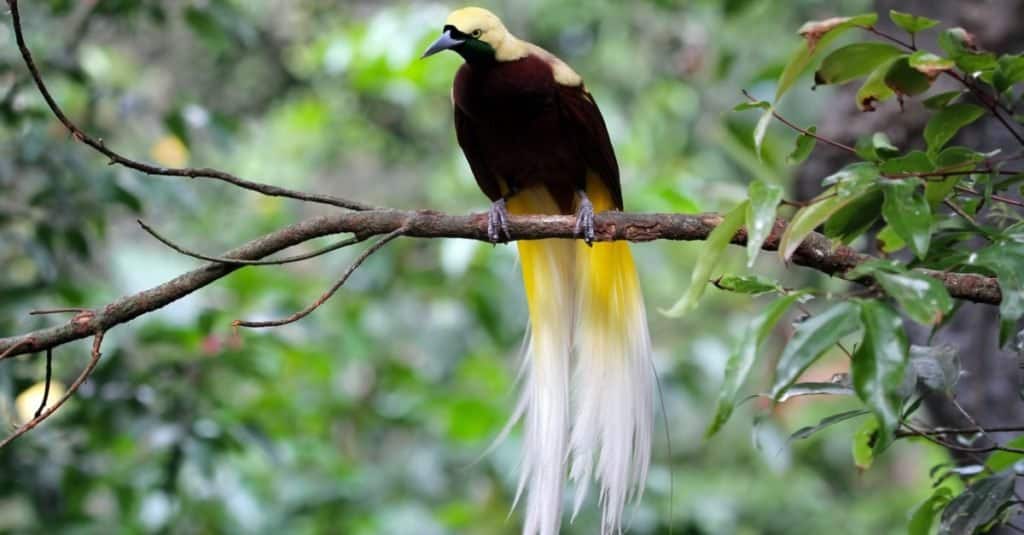
Beautiful bird of paradise sitting on a branch.
©Kurit afshen/Shutterstock.com
The Raggiana bird of paradise was made the national emblem and included on the national flag in 1971. Of the 41 species of this bird, Papua New Guinea is home to 39 of them. The males of the species have more brightly colored plumage, while the females have more subdued colors.
Where To Find The Top Wild Animals In Papua New Guinea
Encompassing about 5,500 square miles, Papua New Guinea has around 71 protected areas and national parks. Here are just a few:
- The Tonda Wildlife Management Area, in the Western Province, is one of the most significant wetlands on the planet and also the largest protected area in the entire country. Amid the 2,200 square miles of swamps, grasslands, Monson forests, and mangrove areas, visitors can find the hare-wallaby, quoll, dunnart, crocodile, birds of paradise, and many other mammals.
- The Maza protected wildlife area covers more than 700 square miles of marine environments and coral reefs to the east of Tonda. Visitors can find dugongs, sea turtles, and other marine animals here.
- The Kamiali Wildlife Management Area, located on the Huon Gulf Coast in Morobe Province, spans across 180 square miles of sandy coasts, lakes, coral reefs, rivers, wetlands, and tropical rainforests. Visitors can find a rich array of reef fish, sea turtles, and other rare fauna.
- Lake Kutubu, located in the Southern Highlands Province, is surrounded by mountains in a rugged depression. It was deemed a wetland of international significance for its unique selection of freshwater fish, including the rainbowfish, the mogurnda, and the grunter.

Lake Kutubu is home to a variety of fish.
©Vladimir Wrangel/Shutterstock.com
Lake Kutubu is the second-largest lake in Papua New Guinea. Lying east of Kikori and southwest of the provincial capital, the lake has a depth of 230 feet and a width of 2.8 miles. This is a large tropical lake that was derived from volcanic ash. With its great biodiversity and ecological significance, it has been designated a Wildlife Management Area.
The Most Dangerous Animals In Papua New Guinea Today

A Hooded pitohui (Pitohui dichrous) sitting in a tree in the Varirata National Park, Papua New Guinea.
©feathercollector/Shutterstock.com
While Papua New Guinea contains very few large predators (besides the crocodile), it does have several smaller, poisonous animals that pose a danger to people. Of 80 recognized snakes, the country is home to six venomous species. Together they are responsible for about a thousand deaths per year. Interestingly, PNG contains one of the few poisonous birds in the world, the hooded pitohui. It’s believed that the bird derives this poison from something it eats.
- Coastal Taipan – Sporting a uniform olive or reddish-brown color, the coastal taipan is one of the most dangerous snakes in the world. Venom affects the body by attacking the nervous system and the blood clotting ability. Nearly all cases of untreated bites eventually prove to be fatal.
- Papuan Black Snake – A member of the same family as the coastal taipan, the black snake can deliver a powerful neurotoxin that causes muscle weakness and paralysis. Although not quite as deadly as its cousin, the venom can be life-threatening if delivered in a large enough dose.
- Death Adders – Papua New Guinea is home to both smooth-scaled and rough-scaled death adders. These snakes lie in wait and strike their targets very quickly with their dangerous venom.
- New Guinea Crocodile – Measuring up to 11 feet long, this crocodile is strong, aggressive, and not to be messed with. Fortunately, attacks on humans are relatively rare.
One of the only known toxic birds in the world, the hooded pitohui is found on this island. Batrachotoxin, the same chemical substance found in poisonous frogs, is what makes this little bird so deadly. This toxin binds to nerve cells and prevents them from closing. Touching this bird will cause severe burning and pain to your skin. Eating it is not a good idea. There is no antidote for this poison and if you’ve been infected, it will result in paralysis and death.
Endangered Animals In Papua New Guinea

The Northern glider is closely related to this sugar glider.
©LesPalenik/Shutterstock.com
Papua New Guinea’s diverse fauna has long been under threat from deforestation and hunting. Trees are often cut down for logging or in order to create new grazing grounds or to replace them with highly demanding plantation crops like palm oil. The following is just a small list of the currently endangered species.
- Giant Bandicoot – This is largely regarded as the largest species of bandicoot in the world. While not much is known about it since it was discovered, this long-nosed, rodent-like marsupial is in danger of becoming extinct.
- Black-spotted Cuscus – Closely related to the brushtail possums, the cuscus is a marsupial with a long tail and rounded head. It is currently in danger of becoming extinct from hunting and habitat loss.
- Tree Kangaroos – These arboreal mammals aren’t quite as well-known as their ground-hopping counterpart. In PNG, it lives in the remote mountainous forests of the interior. Unfortunately, this also makes it highly vulnerable to deforestation and overhunting. Three species of this genus are currently endangered: Matschie’s tree kangaroo, Goodfellow’s tree kangaroo, and the tenkile.
- Northern Glider – Closely related to the more well-known sugar glider, this is a unique species of marsupial with the ability to glide through the air from high treetops by using their specialized skin flaps, which extend between the forelegs and the hind legs. It is currently in danger of becoming extinct because of its very limited range.
- New Guinea Big-eared Bat – Little is known about these small-bodied, big-eared bats, but they are currently endangered from habitat loss.
The Northern glider was discovered in the Torricelli Mountains of north-western Papua New Guinea in 1981. They are primarily found in tropical, moist rainforests. Adults average 10 inches in length and weigh around 9.8 ounces. Fruit is the main staple of their diets. They are listed as critically endangered due to human encroachment and hunting.
The Rarest Animals In Papua New Guinea
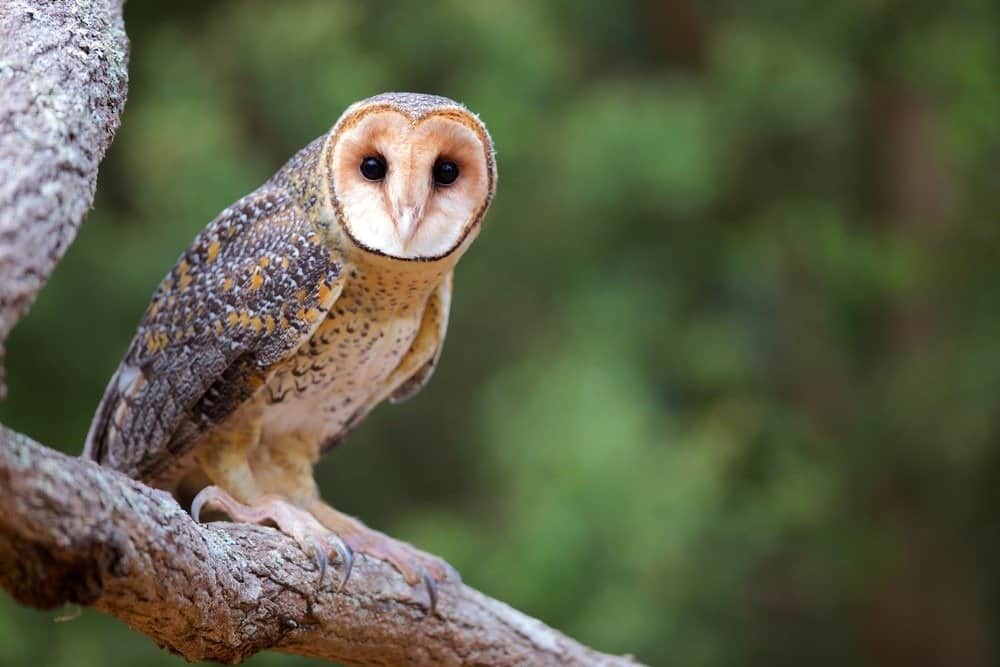
Golden Masked Owl sitting on branch
©Owen Derrick Photography/Shutterstock.com
The golden masked owl is one of the rarest animals in Papua New Guinea. Also known as the Bismark owl, Bismark masked owl, New Britain barn owl, and the New Britain masked owl. Its habitat is located off the coast of Papua New Guinea on the island of New Britain and because it is very difficult to spot, it has not been well studied. While currently not endangered, they are listed as vulnerable as the forests where they reside are listed as endangered. Habitat loss will have an effect on the current population, which numbers between 2500 to 9999.
The Largest Animals In Papua New Guinea

The
Tiger
Quoll (Dasyurus maculatus) is similar to the rare bronze quoll found on the island.
©Leonard G – Public Domain
Papua New Guinea is not known for hosting animals of great sizes. The largest animal found on the island, first discovered in Southern New Guinea in 1979, is the bronze quoll. It is considered the largest omnivorous mammal, while the tree kangaroo is considered the largest herbivore. The bronze quoll, which is a nocturnal predatory species, is listed as a threatened species. The bronze quoll generally lives on average between 3 to 5 years.
The tree-kangaroo is an herbivore, with the rainforest as its habitat. Weighing up to 32 pounds and measuring about 30 inches, which doesn’t include their almost 34-inch tails, this marsupial is the only known kangaroo to live in the trees. There are fewer than 2,500 left in their native habitat due to illegal hunting for trade and food. It is hard to determine their age because they are difficult to study in the wild but it is believed that they have a lifespan of 15 to 20 years.
Papua New Guinean Animals
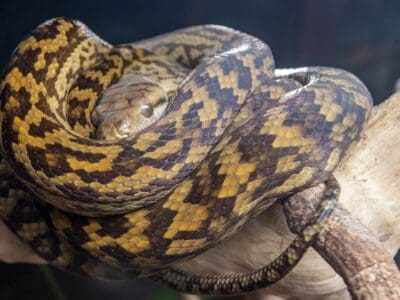
Amethystine Python (Scrub Python)
Their milky-iridescent scales have a purplish hue in the light, reminiscent of the gemstone.

Ant
First evolved 100 million years ago!

Arafura File Snake
These snakes have rough, file-like skin.
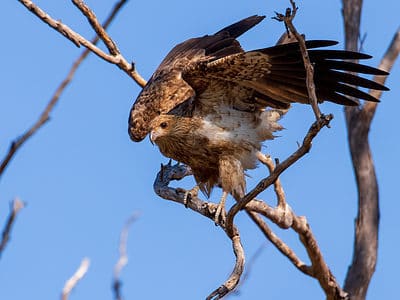
Australian Firehawk
Australian firehawks are the arsonists of the avian world!
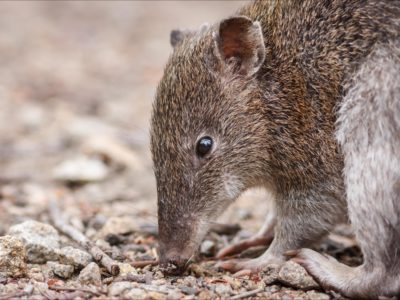
Bandicoot
Bandicoot Many species are endangered or extinct!

Barn Owl
Found everywhere around the world!

Barn Swallow
Older offspring help care for new hatchlings.

Bat
Detects prey using echolocation!

Bed Bugs
Bed bugs feed for 4-12 minutes.

Bee
Rock paintings of bees date back 15,000 years

Beetle
There are more than 350,000 different species

Bird
Not all birds are able to fly!
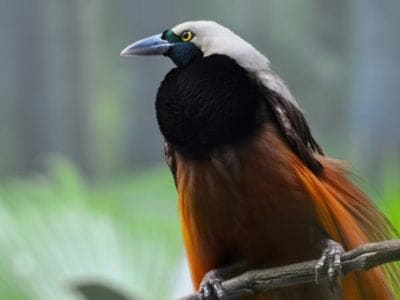
Bird Of Paradise
There are around 50 different species!

Biscuit Beetle
The biscuit beetle form a symbiotic relationship with yeast

Black Widow Spider
They typically prey on insects!
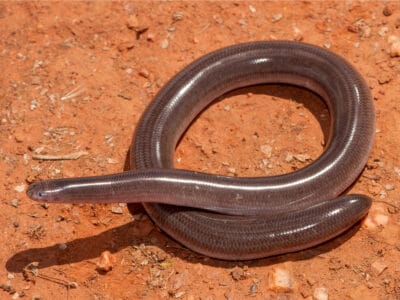
Blind Snake
The blind snake is often mistaken for a worm.
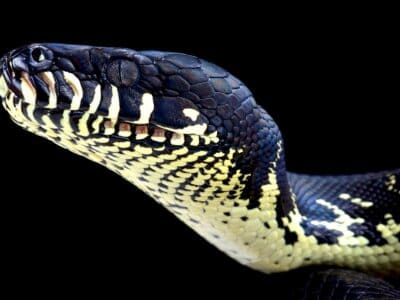
Boelen’s python
A single hatchling can go for over $5,000 as a pet.

Brazilian Treehopper
“Mild-Mannered Minimonsters”

Brown Dog Tick
Can live its entire life indoors

Brown Tree Snake
People have reported seeing these snakes in Texas, Oklahoma, and Hawaii, but this has never been proven!

Butterfly
There are thought to be up 17,500 species!

Camel Cricket
The camel crickets that are found in the USA are light brown in color. They also have dark streaks all over their body.

Carpenter Ant
Carpenter ants can lift up to seven times their own weight with their teeth!
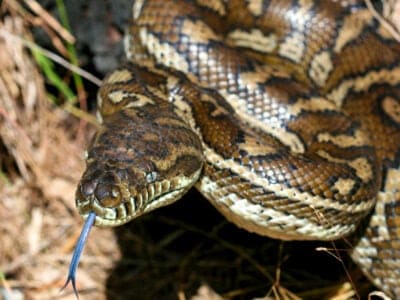
Carpet Python
Carpet pythons are popular pets because of their calm temperament.
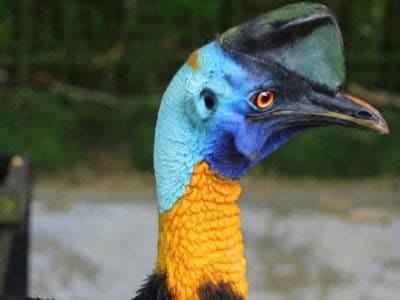
Cassowary
Can reach speeds of 30 mph!

Cat
May have been domesticated up to 10,000 years ago.

Caterpillar
The larvae of a moth or butterfly!

Catfish
There are nearly 3,000 different species!

Centipede
There are about 3,000 documented species!

Chicken
First domesticated more than 10,000 years ago!
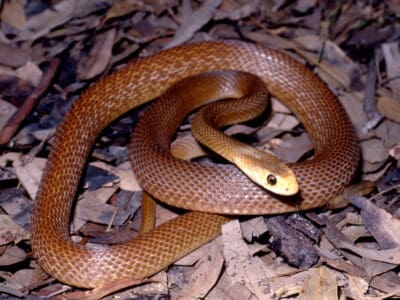
Coastal Taipan
The venom in its bite starts to have adverse effects on a human within 30 minutes
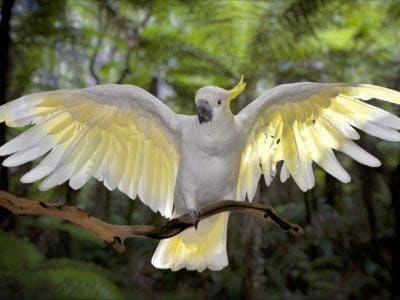
Cockatoo
Highly social, smart, and chatty bird.

Cockroach
Dated to be around 300 million years old!

Coconut Crab
The largest terrestrial arthropod in the world

Codling Moth
Pupae are able to undergo diapause to survive poor fruit yield years and winter.
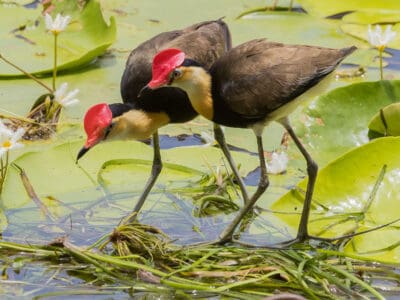
Comb-crested Jacana
They are busy foragers, always on the move

Common Furniture Beetle
The common furniture beetle feeds exclusively on wood

Common House Spider
House spiders have the ability to eat most insects in a home.
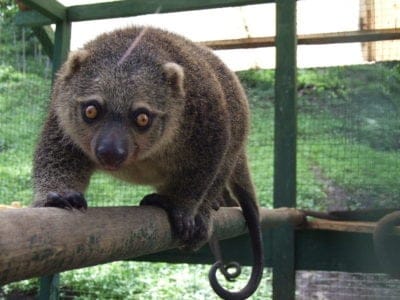
Common Spotted Cuscus
Has a long, strong prehensile tail!

Coral Snake
There are over 80 species of coral snake worldwide.
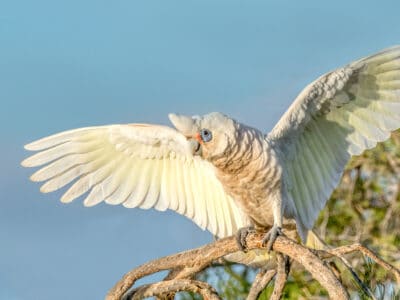
Corella
Corella birds are noisy, especially during the early morning or late evening.

Cormorant
They can fly 35 mph and dive 150 feet below water.
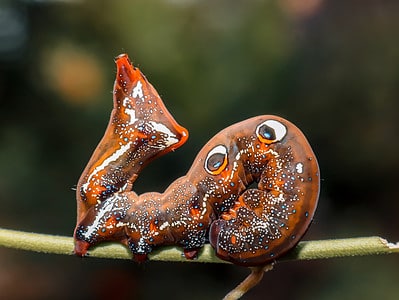
Cosmic Caterpillar
Cosmic caterpillars have spots on their back that look like eyes to scare off predators.

Cow
There are nearly 1.5 billion worldwide!

Crab
There are 93 different crab groups

Crab Spider
Crab Spiders can mimic ants or bird droppings

Crane
Many are critically endangered species!

Cricket
Male crickets can produce sounds by rubbing their wings together

Crocodile
Have changed little in 200 million years!

Crocodile Monitor
Its tail is twice the length of its body.

Crocodylomorph
Crocodylomorphs include extinct ancient species as well as 26 living species today.

Crow
A group of these birds is called a Murder.

Death Adder
The Death Adder is more closely related to the Cobra than other Australian snakes.

Dog
First domesticated in South-East Asia!

Dog Tick
Dog ticks feed on dogs and other mammals

Donkey
First domesticated 5,000 years ago!

Dragonfly
It's larvae are carnivorous!

Duck
Rows of tiny plates line their teeth!

Dung Beetle
The dung beetle can push objects many times its own weight

Earthworm
They are hermaphrodites, which means they have male and female organs

Earwig
There are nearly 2,000 different species!

Eclectus Parrot
Does not squawk like other parrot species.

Eel
Eels can be a mere few inches long to 13 feet!

Emerald Tree Monitor
They lay their eggs in termite nests!

Fairy-Wren
They forage in groups

Falcon
The fastest creatures on the planet!

False Widow Spider
False spiders actually prey on black widow spiders and other hazardous spiders
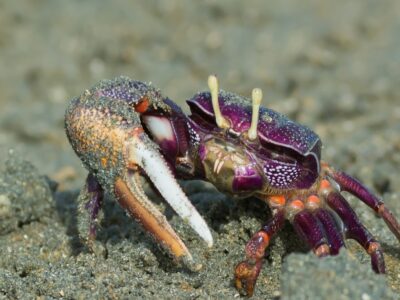
Fiddler Crab
The fiddler crab gets its name from the motion the males make with their over-sized claw during the mating ritual.

Fierce Snake
It can kill multiple humans with the amount of venom it releases in one bite.

Firefly
The firefly produces some of the most efficient light in the world

Flea
Adult fleas can jump up to 7 inches in the air

Fly
There are more than 240,000 different species!

Frilled Lizard
Mainly lives in the trees!

Frog
There are around 7,000 different species!
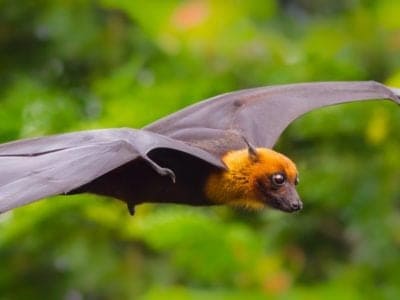
Fruit Bat
Among the largest bats in the world

Fruit Fly
Fruit flies are among the most common research animals in the world

Gecko
There are thought to be over 2,000 species!

German Cockroach
The most common type of urban roach

Giant Trevally
The largest fish in its genus

Glowworm
Found inhabiting dense woodland and caves!

Gnat
Males form large mating swarms at dusk
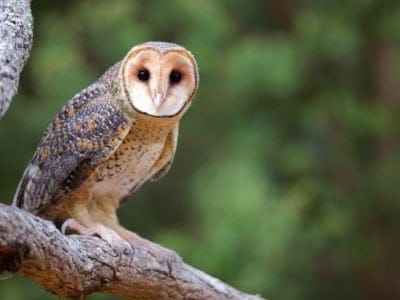
Golden Masked Owl
While flying high above this owl can hear a mouse moving in the tall grass of field!

Grasshopper
There are 11,000 known species!
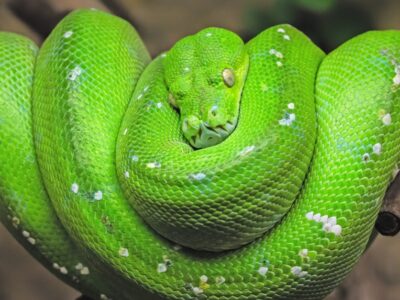
Green Tree Python
Green tree pythons are non-venomous, so to subdue their prey, they have a couple of very unique and highly successful hunting techniques.

Gypsy Moth
One of the most invasive species in the world

Hamster
Able to run as quickly backwards as forwards!

Hare
Can reach speeds of over 50 mph!

Hawk Moth Caterpillar
Many hawk moth caterpillars eat toxins from plants, but don’t sequester them the way milkweed butterflies do. Most toxins are excreted.
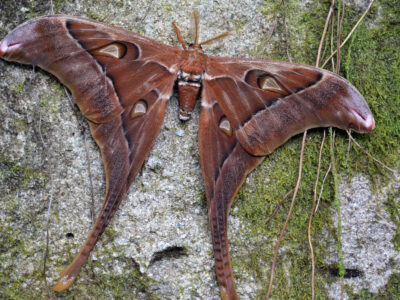
Hercules Moth
Adult Hercules moths don’t eat since they don’t have mouths.

Heron
Inhabits wetlands around the world!

Highland Cattle
Natively found in the Scottish Highlands!

Honey Bee
There are only 8 recognized species!
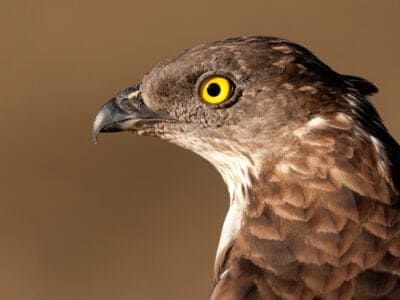
Honey Buzzard
Honey buzzards are medium-sized raptors that earned their names by raiding the nests of bees and wasps.

Horse
Has evolved over 50 million years!

Horsefly
Horseflies have been seen performing Immelmann turns, much like fighter jets.

Housefly
The fly has no teeth

Human
Thought to have orignated 200,000 years ago!

Ibis
Found in swamps, marshes and wetlands!

Insects
There are an estimated 30 million species!
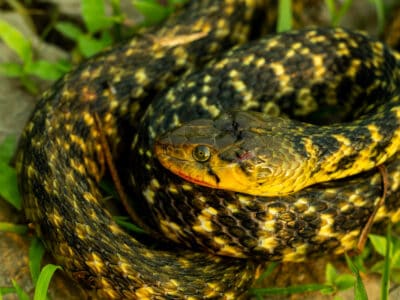
Keelback
The checkered keelback of the east Indies can detach its tail and grow it back, much like a lizard.
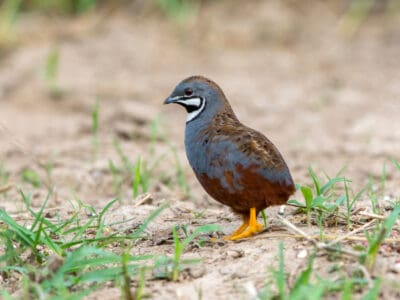
King Quail
Females look similar to males but don’t come in shades of blue

Ladybug
There are more than 5,000 species worldwide!

Laughing Kookaburra
The laughing kookaburra is one of four kookaburra species.
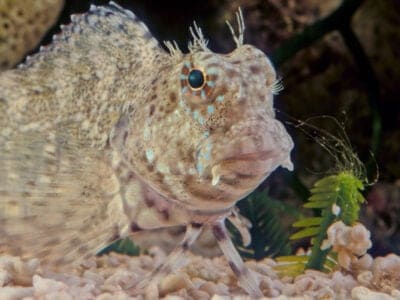
Lawnmower Blenny
Must be in temperatures of 78 degrees Fahrenheit to breed

Leech
Has 10 pairs of eyes!

Lizard
There are around 5,000 different species!

Locust
Each locust can eat its weight in plants each day.
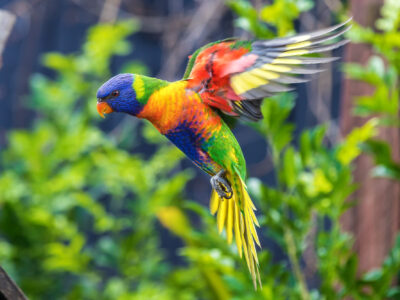
Lorikeet
The lorikeet has a long brush-like tongue with fine hairs on it

Magpie
They are found across Europe, Asia and Africa!
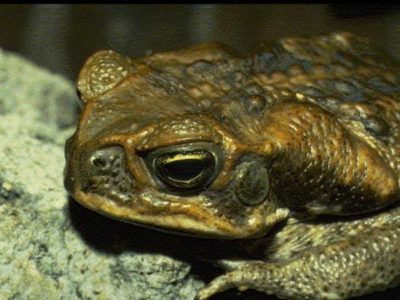
Marine Toad
Produces a toxin used in arrow darts!

Mayfly
There are 2,500 known species worldwide!

Mealybug
They have a symbiotic relationship with ants.

Millipede
Some species have a poisonous bite!

Mole
Primarily hunts and feeds on Earthworms!
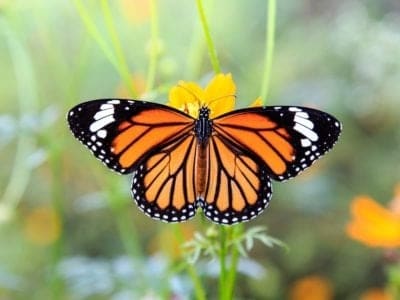
Monarch Butterfly
During migration, Monarch Butterflies may travel 250 or more miles each day.

Mongrel
Has characteristics of two or more breeds!

Monitor Lizard
Some species are thought to carry a weak venom!

Monkey
There are around 260 known species!

Moorhen
Feeds on aquatic insects and water-spiders!

Mosquito
Only the female mosquito actually sucks blood

Moth
There are 250,000 different species!

Mouse
Found on every continent on Earth!

Nematode
Nematodes range in size from 1/10 of an inch to 28 feet long

No See Ums
There are more than 5,000 species.

Orb Weaver
Females are about four times the size of males

Otter
There are 13 different species worldwide

Owl
The owl can rotate its head some 270 degrees
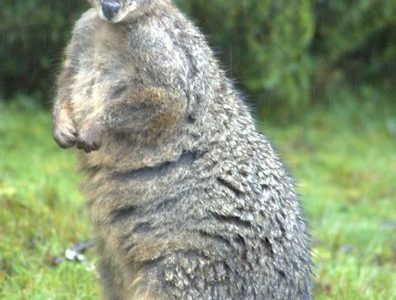
Pademelon
Inhabits the jungles of the far east!

Parrot
Can live for up to 100 years!

Peregrine Falcon
Fastest animal on Earth
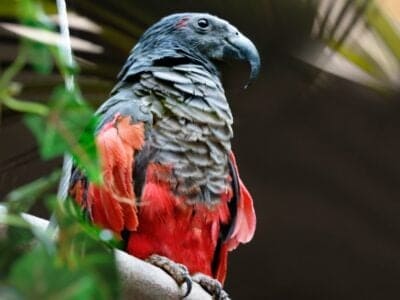
Pesquet’s Parrot (Dracula Parrot)
It’s one of only three parrots with naked faces.

Pheasant
Females lay between 8 and 12 eggs per clutch!

Pig-Nosed Turtle
Their family lineage dates back 140 million years

Pigeon
They can find their way back to their nests from up to 1300 miles away.

Platinum Arowana
The male broods the eggs and baby fish in his mouth.

Pompano Fish
They are bottom-feeders

Possum
There are 69 species on the Australian continent!

Praying Mantis
The mantis can turn its head 180 degrees.
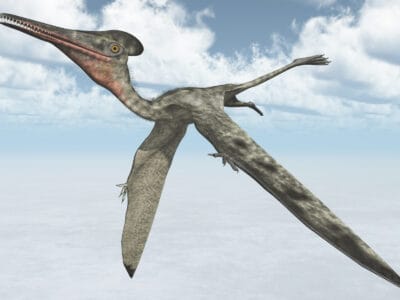
Pterodactyl
Pterodactyl is not technically a dinosaur. Although they lived during the same time as dinosaurs, they are classified as winged reptiles.

Quail
Inhabits woodland and forest areas worldwide!
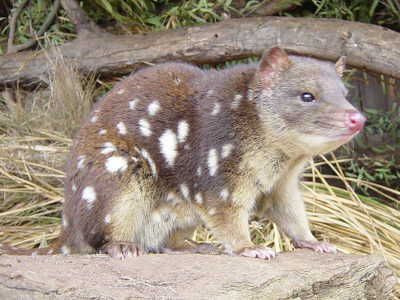
Quoll
Found across Australia and Papua New Guinea!

Rat
Omnivores that eat anything!

Rat Snakes
Rat snakes are constrictors from the Colubridae family of snakes.

River Turtle
Inhabits freshwater habitats around the world!

Robin
There are more than 45 species in Australia alone!

Rodents
The capybara, the world’s largest rodent, likes to be in and around bodies of water. Because of this, the Catholic Church in South America decided that it was a fish, and people were allowed to eat it during Lent and First Fridays.

Rooster
Will mate with the entire flock!

Sable Ferret
Ferrets were used during the Revolutionary War to keep down the rat population.

Sand Crab
The sand crab burrows beneath the sand with its tail

Scorpion
There are around 2,000 known species!
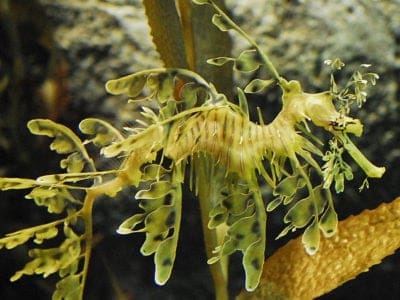
Sea Dragon
Inhabits tropical coastal waters of Australia!

Sea Eagle
The sea eagle tends to mate for life with a single partner

Seahorse
Males give birth to up to 1,000 offspring!

Sheep
Around 35 million in the English countryside!

Shrimp
There are 2,000 different species worldwide!

Skink Lizard
Some skinks lay eggs in some habitats while giving birth to skinklets in other habitats.

Slug
They glide around on one foot, which is aided by the slime they produce

Smokybrown Cockroach
Has up to 45 eggs per egg case

Snail
There are nearly 1,000 different species!

Snake
There are around 4,000 known species worldwide

Sparrow
There are 140 different species!

Spider Wasp
They prey on spiders to feed their larvae or they parasitize other spider wasps.

Spotted Garden Eel
Males battle each other over females and territory
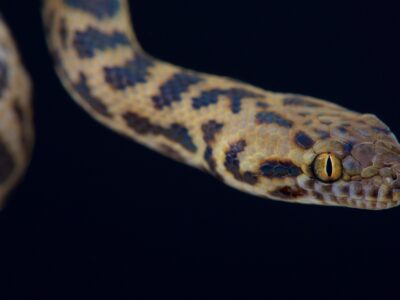
Spotted python
Their favorite food is bats and they hang from cave entrances to snatch them out of midair!

Stick Insect
There are more than 3,000 different species!

Stork
They can’t sing like other birds.
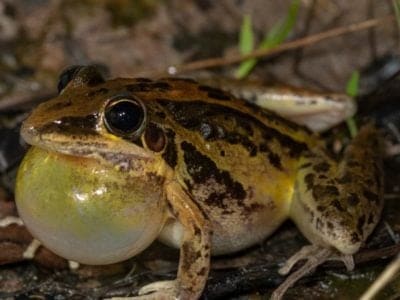
Striped Rocket Frog
Long powerful hind legs!

Swan
Populations have been affected by pollution!
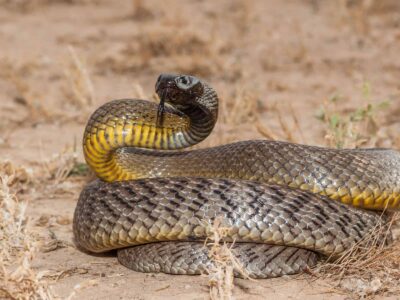
Taipan
The Most Venomous Snakes On Earth

Tarantula Hawk
Tarantula hawks are excellent pollinators, especially for milkweed.
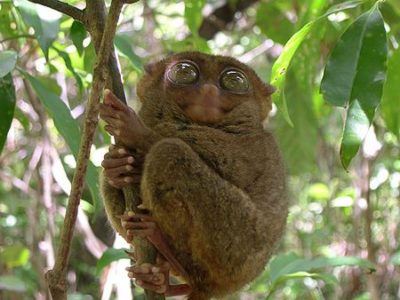
Tarsier
Each eye weighs more than their whole brain!

Termite
Their mounds can be up to 9 meters tall!

Thrush
The American robin is called the robin because its red breast reminded European settlers of the robin back in the old country.

Tick
They inject hosts with a chemical that stops them from feeling the pain of the bite

Tiger Beetle
The adult tiger beetle is one of the fastest land insects in the world

Tortoise
Can live until they are more than 150 years old!

Tree Frog
Found in warmer jungles and forests!
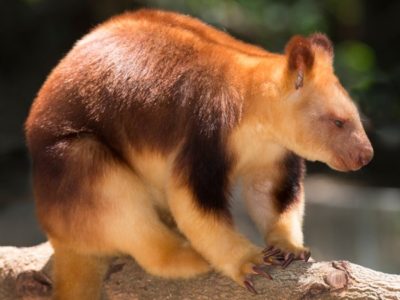
Tree Kangaroo
It’s the only macropod that lives in trees.

Tree Snake
Though this snake’s venomous bite isn’t harmful to adults, it can be dangerous to children

Turtles
Some species of aquatic turtles can get up to 70 percent of their oxygen through their butt.

Ulysses Butterfly
Ulysses butterflies have come back from endangered status to just "threatened."
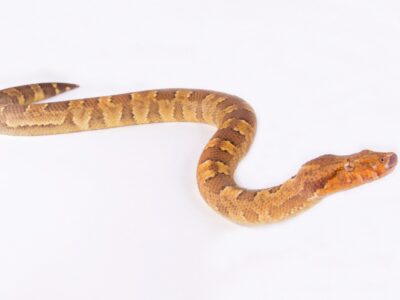
Viper Boa
These boas aren't really vipers, they're nonvenomous constrictors that look like vipers.
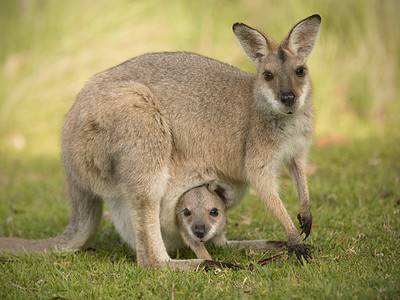
Wallaby
There are roughly 30 different species!

Wasp
There are around 75,000 recognised species!

Water Buffalo
Has been domesticated for thousands of years!
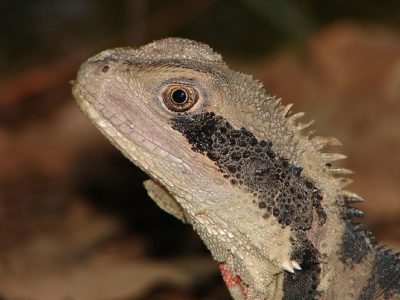
Water Dragon
Spends most of it's time in the trees!

White Ferret / Albino Ferrets
There are two different types of white ferrets!

Wolf Spider
Carnivorous arachnid that hunts its prey.

Woodlouse
This animal can roll up into a ball

Worm
Doesn’t have eyes.
Papua New Guinean Animals List
- Amethystine Python (Scrub Python)
- Ant
- Arafura File Snake
- Australian Firehawk
- Bandicoot
- Barn Owl
- Barn Swallow
- Bat
- Bed Bugs
- Bee
- Beetle
- Bird
- Bird Of Paradise
- Biscuit Beetle
- Black Widow Spider
- Blind Snake
- Boelen’s python
- Brazilian Treehopper
- Brown Dog Tick
- Brown Tree Snake
- Butterfly
- Camel Cricket
- Carpenter Ant
- Carpet Python
- Cassowary
- Cat
- Caterpillar
- Catfish
- Centipede
- Chicken
- Coastal Taipan
- Cockatoo
- Cockroach
- Coconut Crab
- Codling Moth
- Comb-crested Jacana
- Common Furniture Beetle
- Common House Spider
- Common Spotted Cuscus
- Coral Snake
- Corella
- Cormorant
- Cosmic Caterpillar
- Cow
- Crab
- Crab Spider
- Crane
- Cricket
- Crocodile
- Crocodile Monitor
- Crocodylomorph
- Crow
- Cuckoo
- Death Adder
- Dog
- Dog Tick
- Donkey
- Dragonfly
- Duck
- Dung Beetle
- Earthworm
- Earwig
- Eclectus Parrot
- Eel
- Emerald Tree Monitor
- Fairy-Wren
- Falcon
- False Widow Spider
- Fiddler Crab
- Fierce Snake
- Firefly
- Flea
- Fly
- Frilled Lizard
- Frog
- Fruit Bat
- Fruit Fly
- Gecko
- German Cockroach
- Giant Trevally
- Glowworm
- Gnat
- Golden Masked Owl
- Grasshopper
- Green Tree Python
- Gypsy Moth
- Hamster
- Hare
- Hawk Moth Caterpillar
- Hercules Moth
- Heron
- Highland Cattle
- Honey Bee
- Honey Buzzard
- Horse
- Horsefly
- Housefly
- Human
- Ibis
- Insects
- Keelback
- King Quail
- Ladybug
- Laughing Kookaburra
- Lawnmower Blenny
- Leech
- Lizard
- Locust
- Lorikeet
- Magpie
- Marine Toad
- Mayfly
- Mealybug
- Millipede
- Mole
- Monarch Butterfly
- Mongrel
- Monitor Lizard
- Monkey
- Moorhen
- Mosquito
- Moth
- Mourning Gecko
- Mouse
- Nematode
- No See Ums
- Orb Weaver
- Otter
- Owl
- Pademelon
- Parrot
- Peregrine Falcon
- Pesquet’s Parrot (Dracula Parrot)
- Pheasant
- Pig-Nosed Turtle
- Pigeon
- Platinum Arowana
- Pompano Fish
- Possum
- Praying Mantis
- Pterodactyl
- Quail
- Quoll
- Rat
- Rat Snakes
- River Turtle
- Robin
- Rodents
- Rooster
- Sable Ferret
- Sand Crab
- Scorpion
- Sea Dragon
- Sea Eagle
- Seahorse
- Sheep
- Shrimp
- Skink Lizard
- Slug
- Smokybrown Cockroach
- Snail
- Snake
- Sparrow
- Spider Wasp
- Spotted Garden Eel
- Spotted python
- Stick Insect
- Stork
- Striped Rocket Frog
- Swallowtail Butterfly
- Swallowtail Caterpillar
- Swan
- Taipan
- Tarantula Hawk
- Tarsier
- Termite
- Thrush
- Tick
- Tiger Beetle
- Tortoise
- Tree Frog
- Tree Kangaroo
- Tree Snake
- Turtles
- Ulysses Butterfly
- Viper Boa
- Wallaby
- Wasp
- Water Buffalo
- Water Dragon
- White Ferret / Albino Ferrets
- Wolf Spider
- Woodlouse
- Worm
Animals In Papua New Guinea FAQs (Frequently Asked Questions)
What type of animals live in Papua New Guinea?
Papua New Guinea is particularly rich in marsupials, rodents, bats, honeyeaters (a family of nectar-eating birds), birds of paradise, and many other species of forest birds. Snakes, lizards, amphibians, freshwater fish, and insects are also quite prolific throughout the country. The largest fauna are the flightless cassowaries and crocodiles, but there are few large mammals.
What dangerous animals live in Papua New Guinea?
Papua New Guinea is home to six very poisonous and dangerous snakes, plus the crocodile.
Are there tigers in Papua New Guinea?
No, tigers are not found as far east as Papua New Guinea.
How many species of animals are there in Papua New Guinea?
The island of New Guinea is one of the world’s great biodiversity hotspots. It is home to some 4,600 discovered vertebrates (about 8% of the world’s total) and an unknown but still sizeable number of invertebrates, many of which have yet to be discovered.






